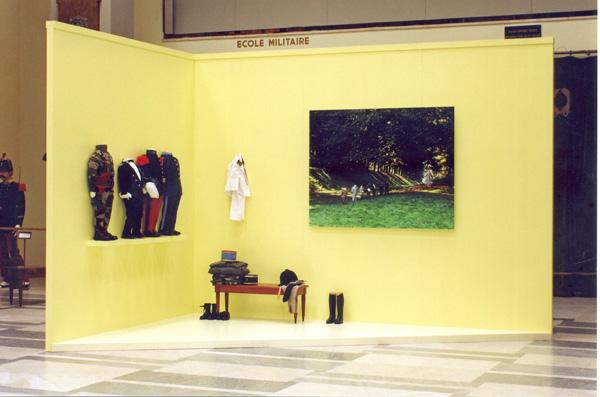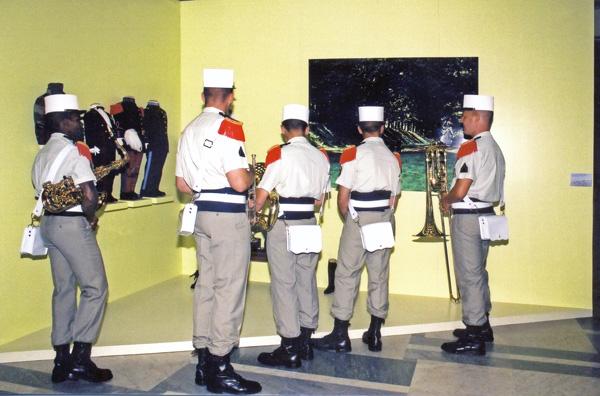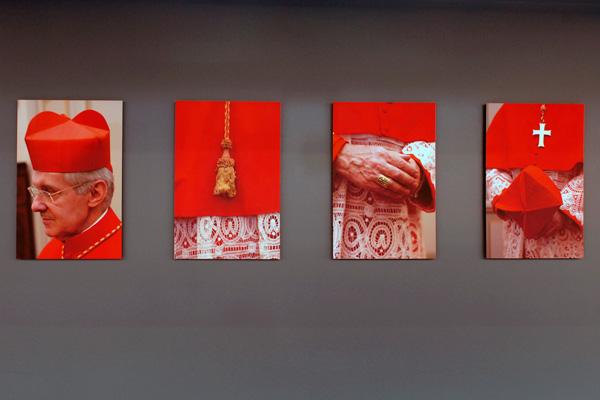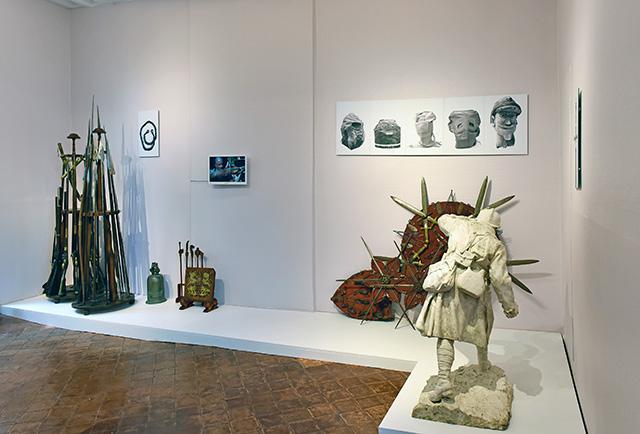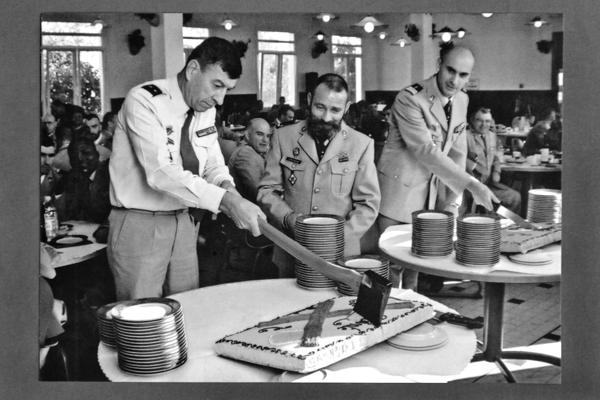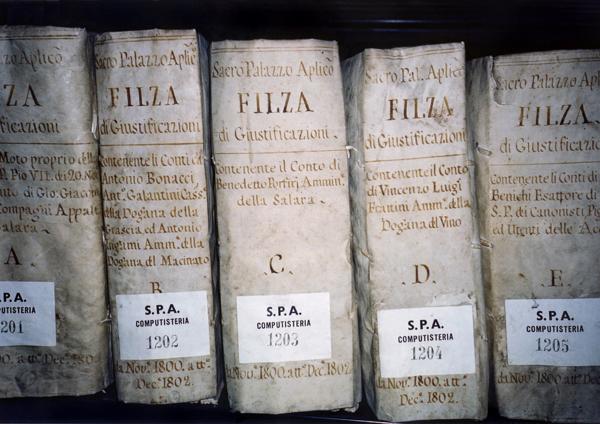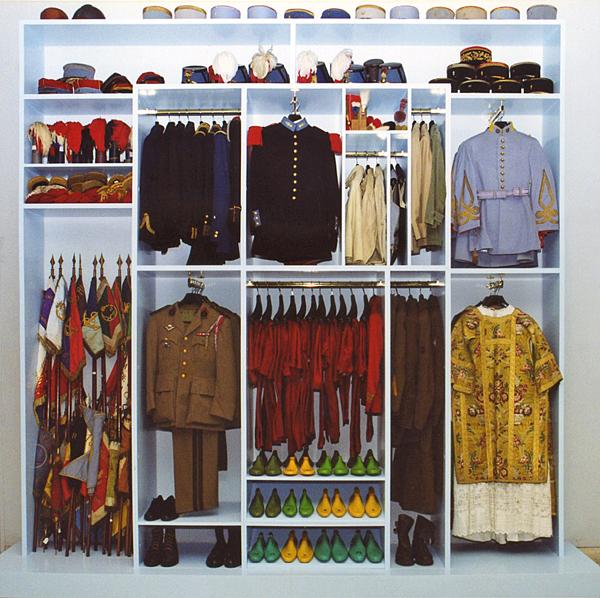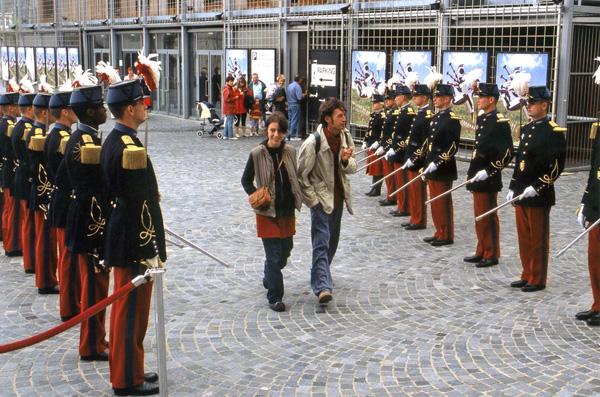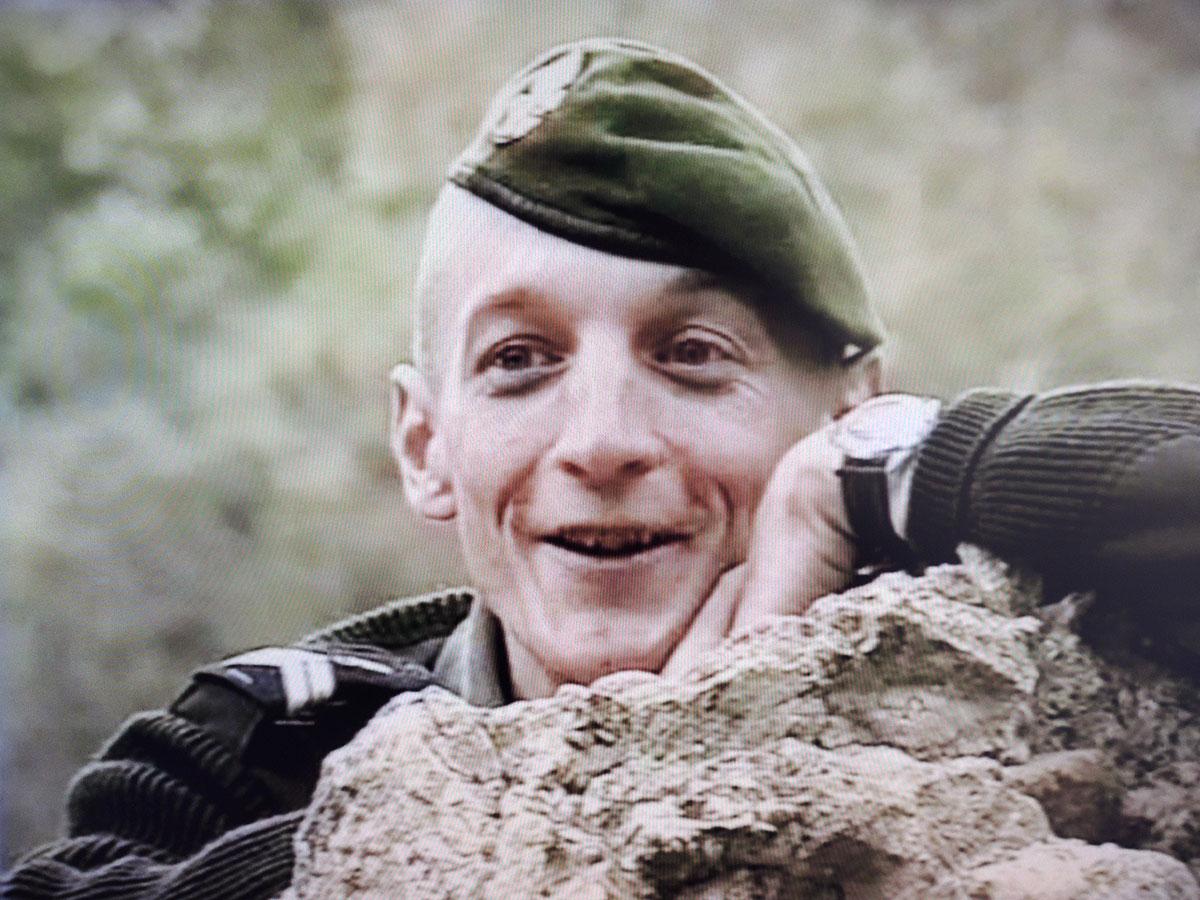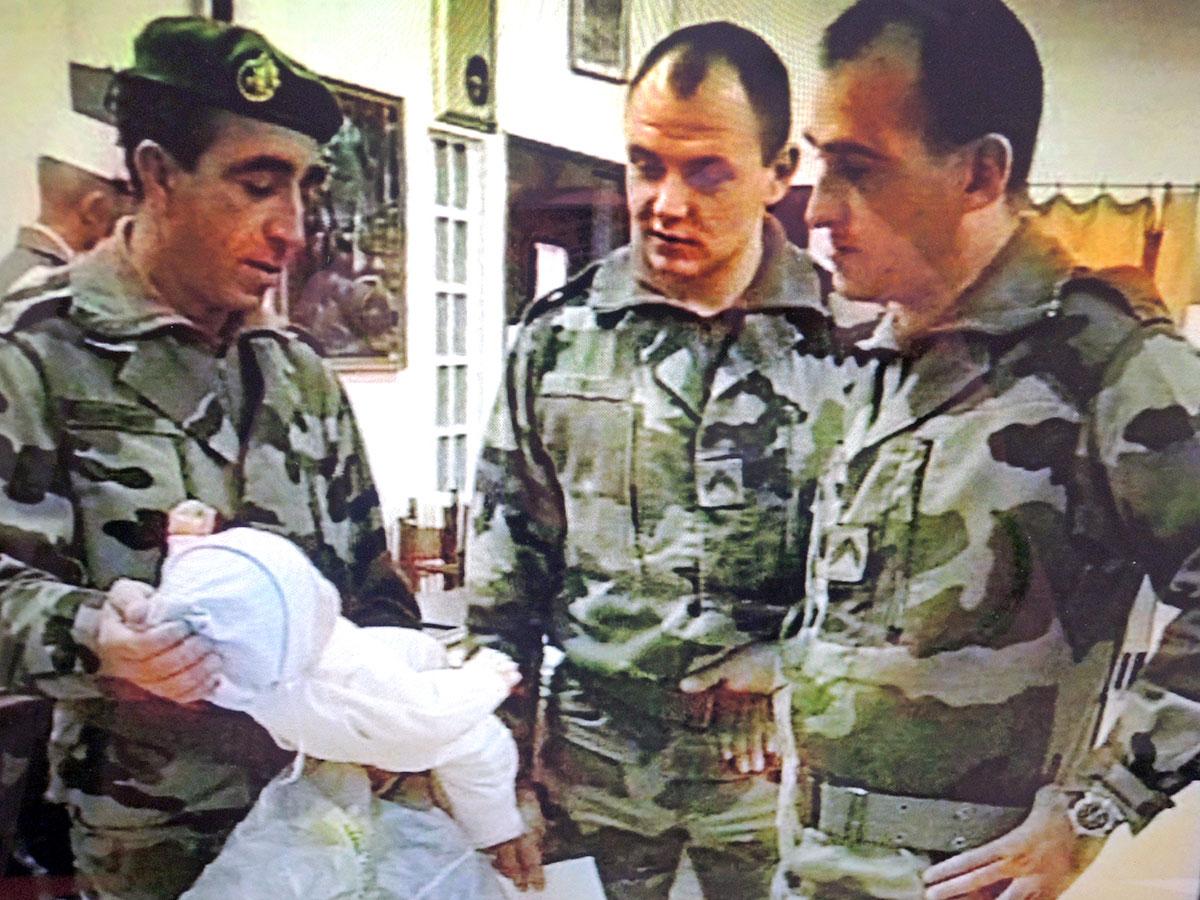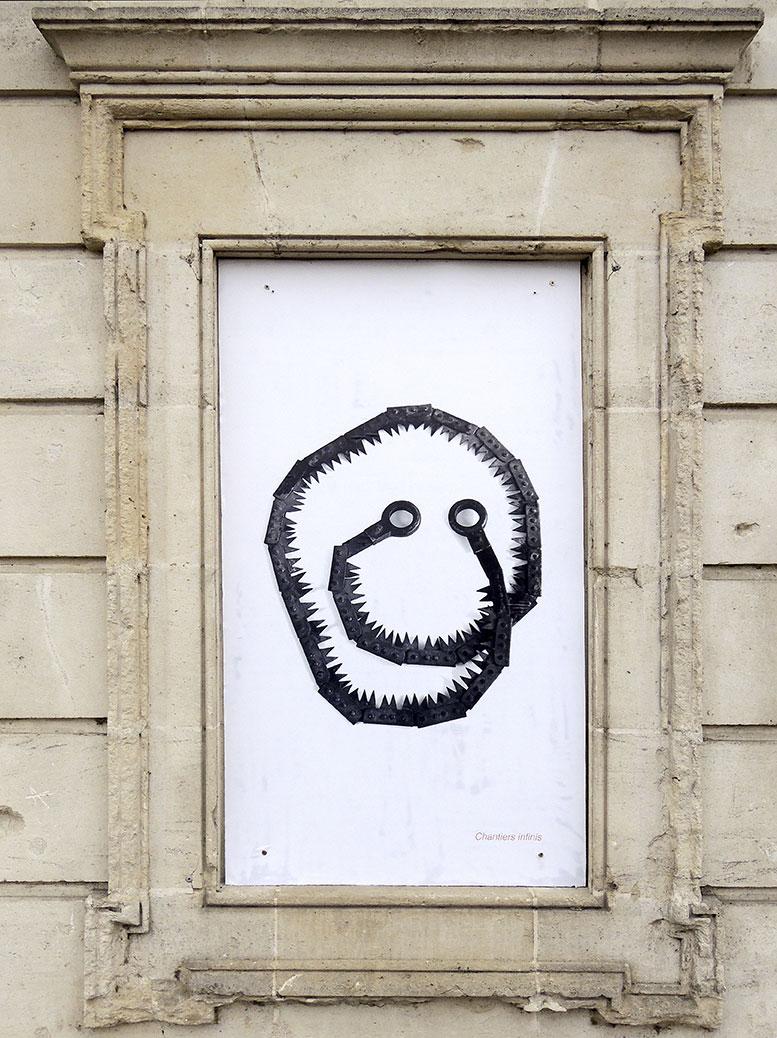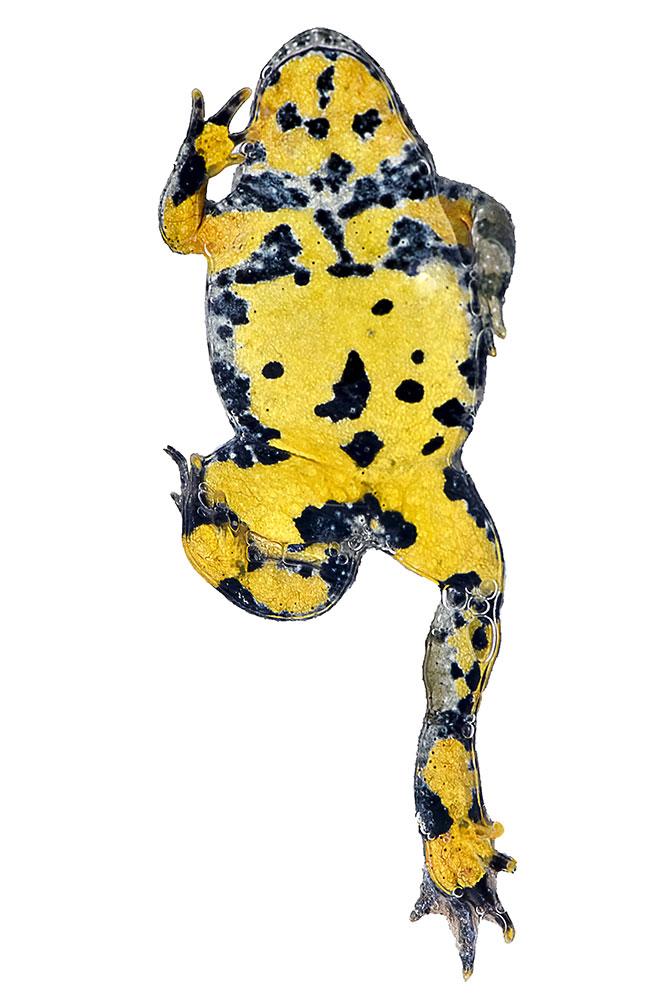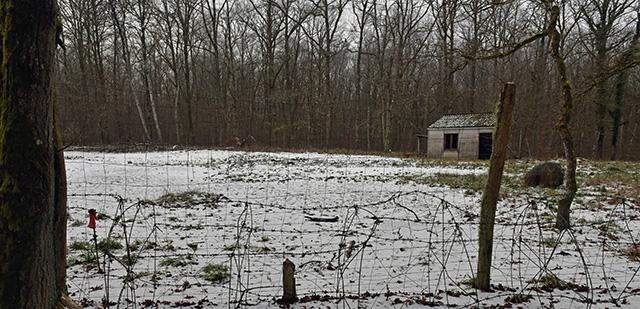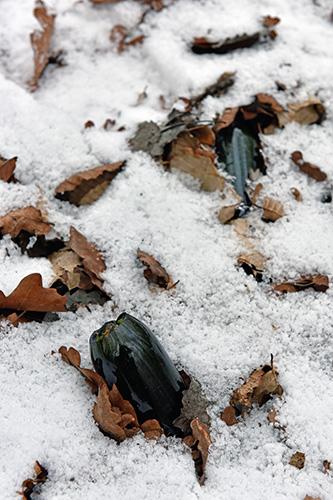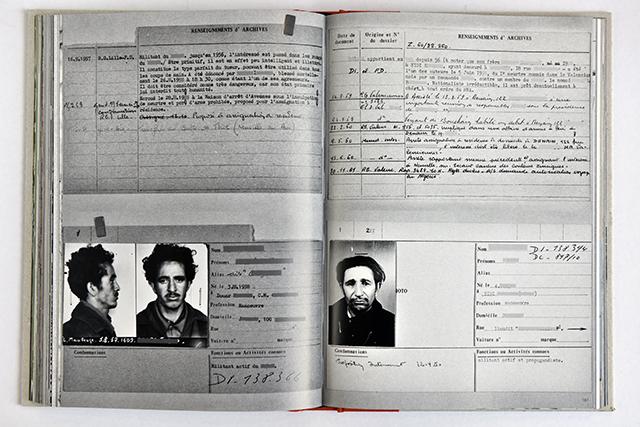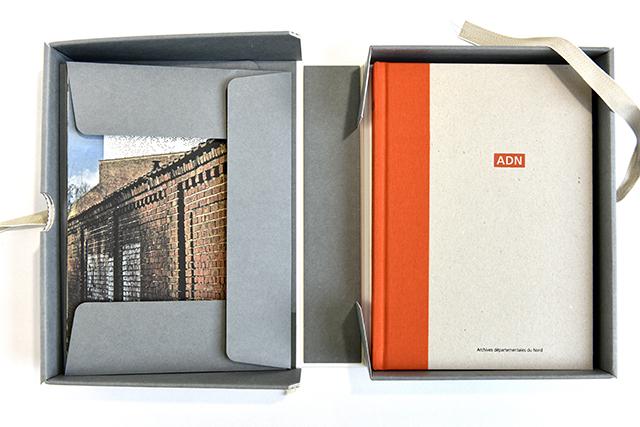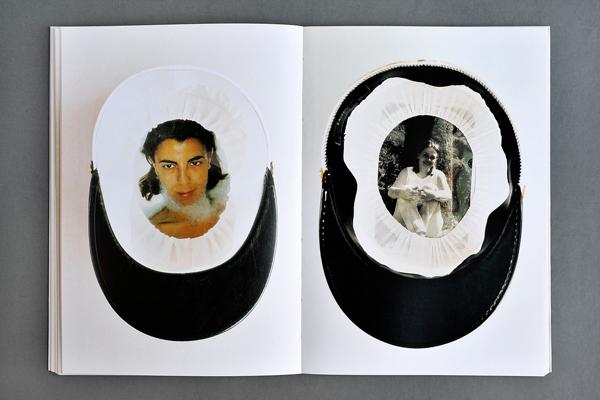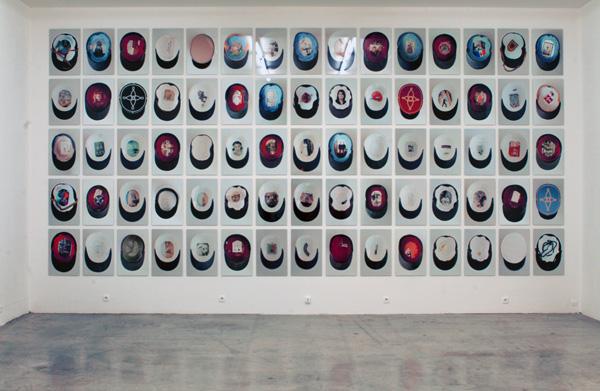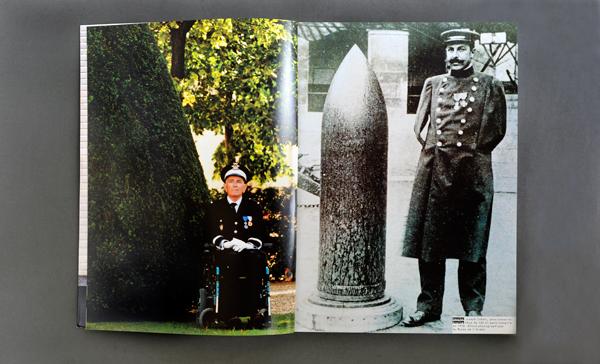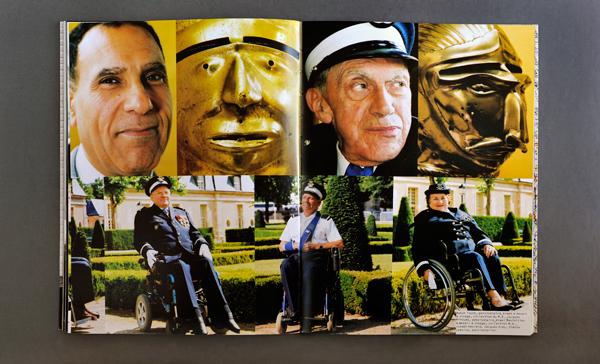Bernadette Genée et Alain Le Borgne
On the Proper Use of Prepositions in Art Circles
Bernadette Genée and Alain le Borgne initially separated their activities, but since 1998 they have signed all their works with both their names. And two people is still very few indeed to thoroughly embrace the themes concerning them, usually for cycles spanning several years: army corps and their uses (Saint-Cyr and the Foreign Legion), the Vatican and its codes, and more recently issues of memory to do with the Great War. Each and every time, they grapple with symbolically and historically “charged” places and subjects—we might even call them weighty--, about which numerous more or less stereotypical and expected images are already in circulation. In these contexts, which may seem suffocating, they have to arm themselves with patience in order to have their presence accepted as artists, and get beyond preconceptions, from both sides.
This lengthy period of research and collecting follows a methodology that has been prepared over the years. Everything starts with an in-depth phase of documentation and discovering the area of exploration, during which they identify the interlocutors capable of then acting as go-betweens and guides. In those highly codified spaces represented by the Saint-Cyr Coëtquidan Military School, the Foreign Legion high command at Aubagne, and the arcana of the Vatican, these people of confidence help to negotiate with the hierarchies, sometimes get around them, and have access to what is not usually shown. It is not a matter of revealing what is hidden, in order to denounce or judge, simply of shedding light on things which would otherwise remain in the shadows. In a nutshell, to move away from the shores of the known, and sail towards more uncertain waters. For all this, Bernadette Genée and Alain Le Borgne have nothing about them that resembles ethnologists in pirogues, making their way through the equatorial forest to encounter unknown and exotic peoples. They are more akin to Jeanne Favret-Saada, that ethnologist who immersed herself in the Mayenne countryside1 in the 1970s, there to study the practices of witchcraft, and demonstrating through her study of the attitudes and features of the discourse that “in sorcery, the act is the word”.2
Everything in their works, incidentally, involves differences and displacements. For Transfert de compétences(2002), they exchanged for a week the telephone lines of the main departments of the FRAC des Pays de la Loire with those of a an army recruitment centre. At the opening of the exhibition Du général au particulier (20020, the displacement was physical: students in the bicentenary class of the Special Military School of Saint-Cyr Coëtquidan went to the Le Quartier art centre, in Quimper, to form a guard of honour for visitors. In 2003, they appropriated the image of the legionnaire, who, in front of their camera, became a person with no hesitation about expressing his sensibility: in the video Sortilèges, they filmed soldiers, not in the heat of action but reciting poems outdoors, sitting in the grass, while in Je crèche derrière le musée, we this time see oddjobmen legionnaries making a very beautiful Christmas crèche, respecting a little known tradition in the Foreign Legion. With wit but without mockery, Bernadette Genée and Alain Le Borgne broach subjects that interest them, by taking them the wrong way round, precisely where least expected. When, for example, they work on Verdun, in addition to objects bearing witness to war, such as soldiers’ helmets and gas masks, part of the project Chantiers infinis is devoted to the endemic species of wildlife which thrive in the Verdun forest, which is now protected (including the toad with the evocative name of Bombina variegata), or a wild boar hunter making his own sausage, with animals nevertheless drinking water in the fearsome “Place à gaz” or “Gas Place”, banned because, after the First World War, it was contaminated with arsenic for generations.
Even if Bernadette Genée and Alain Le Borgne also produce videos, performances, sculptures and drawings, their activity is very broadly photographic. They have gradually put together huge visual archives, based on an approach which we might readily call encyclopaedic, to such an extent are the “entries” in each subject both free and diversified: many snapshots taken on the spot during their brief stays in places, objects photographed in situ sometimes, or with a moveable makeshift studio (consisting of a single-coloured backdrop and a few lights), and reproductions of documents… It is then necessary to organize this considerable mass of information (their own photographs, the documentation they bring together, and the objects which they collect or which come from museums), and several value scales (what is historical, personal, anecdotal, day-to-day, official, unofficial, difficult to obtain, and so on).
As such, their shows and their publications are not far removed from the activities of “iconographic artists”3 like Batia Suter, Aurélien Froment and Haris Epaminonda, who associate and juxtapose large numbers of images—which they are not always the authors of---, concerned as much with the connections that are made between images as with individually imagined images. They organize photographs and objects in such as way as to make them fit beside others, using a lengthy process of selection and adjustments, creating evolving associations from one presentation to the next. Using close-ups, reframing and at times unexpected comparisons, they focus on multiple readings of their assemblages (or their captionless page layouts when books are involved), based on a deliberately open art of montage. No narrative is imposed, it is up to the spectator to decipher it all. For years, Bernadette Genée and Alain Le Borgne have been exploring military, religious and political codes, to better to upset them, so why not make the most of things to upset exhibition visitors a little, in passing?
Which brings us once again to a question of prepositions. Artistically and grammatically, should we act against, without, in accordance with or else just with the visitor?
Translated by Simon Pleasance & Fronza Woods
Notes :
1. An area far from being as exotic as Amazonia for the tourist. For the ethnologist, it’s less sure.
2. Jeanne Favret-Saada, Les Mots, la mort, les sorts, Paris, Gallimard, coll. “NRF”, 1977, p. 21.
3. See: Garance Chabert, Aurélien Mole (ed.), Les Artistes iconographes (exh. cat.), Paris, Empire, 2018.
